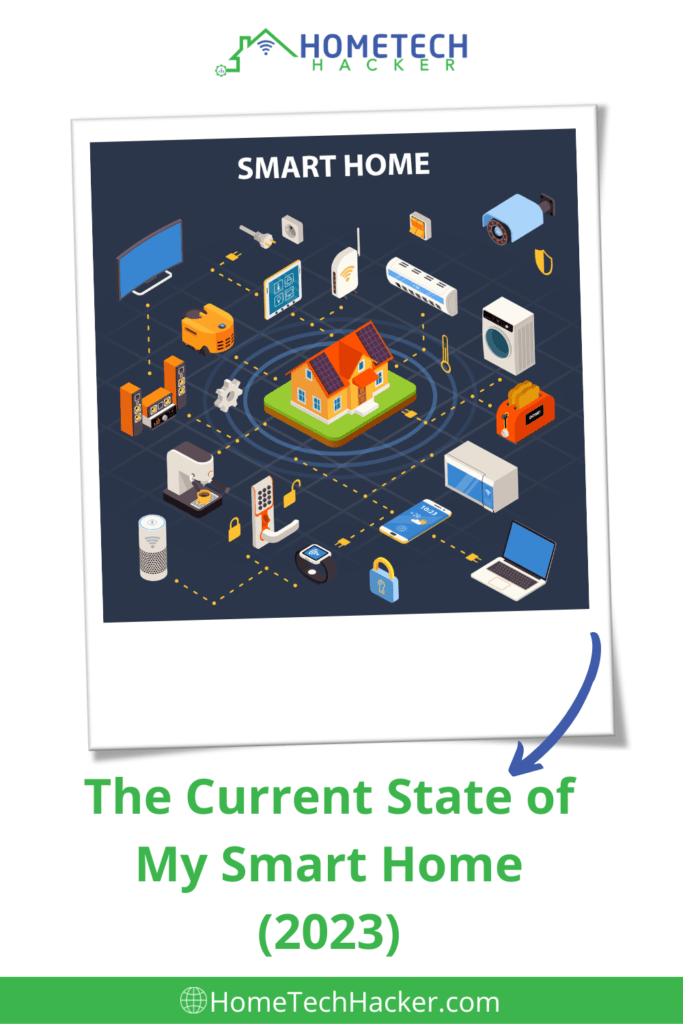
In technology, if things stay the same then you are falling behind. I don’t like for my smart home to fall behind. I’m always making changes and improvements.
In this article I’m going to go through the changes and improvements I made in 2022, and then go through my plans for 2023.
Editor’s Note: Be sure to check out the state of my smart home in 2024.
Table of Contents
My smart home background
I write about my smart home frequently on this blog. Here are some articles that are a good background for this article:
- My Smart Home Evolution Series — These articles talk about how I got into smart homes and how my smart developed into what it is today
- 2021 and 2022 smart home update articles — These articles detail the changes I made and my plans for my smart home over the past two years
- Updating My Home Lab — This article details the basis for my current home lab infrastructure
The changes I made to my smart home in 2022
When I first thought back on last year I thought I hadn’t made a lot of changes. But as I started to reflect and write down the changes I made, I realize I made a ton of changes and I was busier than I thought. Here’s the long list:
Upgraded to Proxmox 7
Proxmox is my hypervisor of choice and critical for the successful operation of my home lab and my smart home. So, naturally, I worry about upgrades like this going wrong. I did my research on the proper way to upgrade and looked on forums for potential gotchas. I was prepared and then proceeded to upgrade without any incident.
Added a backup Proxmox hypervisor
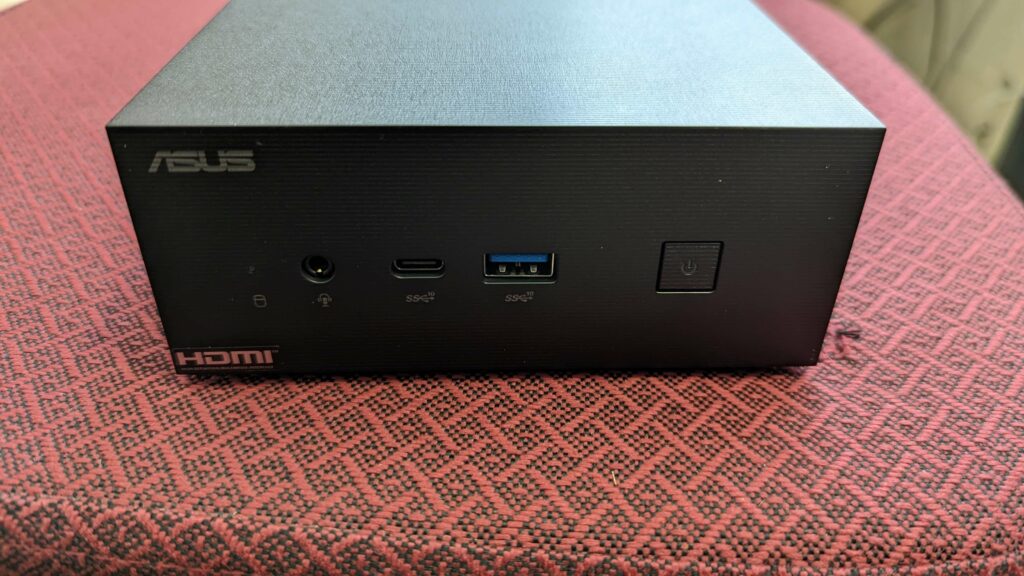
I had an old aging, 12-year-old energy-hungry tower machine as my secondary Proxmox hypervisor. I decided to replace it with something that was more powerful, less power-hungry, and much more compact. After considering a lot of Proxmox hardware options, I decided on the Asus PN63-S1. It has worked well.
Upgraded to Wi-Fi 6
We have a few devices that are compatible with Wi-Fi 6 in our house. I upgraded to take advantage of the speed and stability improvements by buying the TP-Link EAP 610 access point. I later added the TP-Link EAP 620 for more Wi-Fi 6 coverage.
Z-Wave to Z-Wave JS migration in Home Assistant
This was another upgrade (migration, really) that worried me. I have dozens of Z-Wave devices and was worried I’d have to re-pair them or that the migration would fail. Thankfully, the migration went well and my Z-wave network is more stable and responsive now.
Made my smart home safer with Alexa Guard
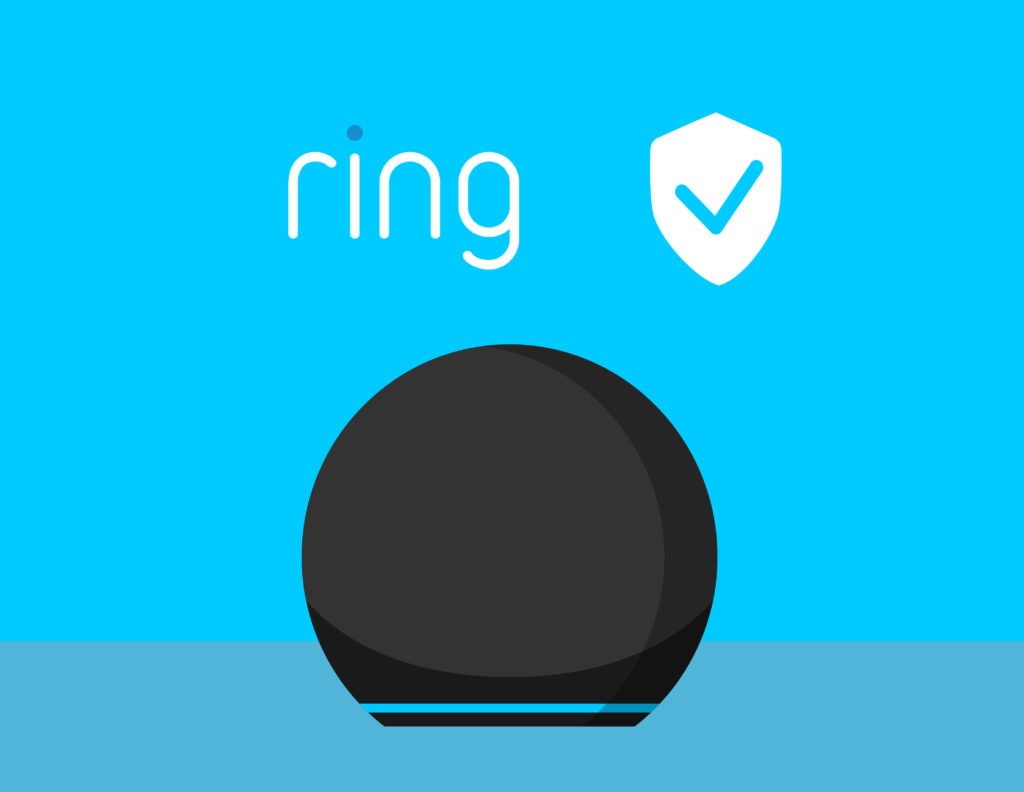
Alexa Guard can make your home safer by helping to detect and deter intruders from your home and notifying you of events like smoke alarms. I enabled the free features and automated Alexa Guard to turn on when my alarm is armed away. You can learn more about how I automated this, as well as all the features of the paid and free versions, in my Alexa Guard review.
Automated the final light in my home
I have had all the lights in my home automated in some form or fashion except one. The switch for it was in an odd location on a circuit I don’t like to mess with. Also, the light isn’t used too often, so I didn’t have a lot of motivation to get to it. But I finally did, and I used the newer Shelly Plus 1 to automate it.
Added addressable LEDs to my fence
I added WLED-powered LEDs to my fence. What had stopped me from doing this before was how far away the fence was from the Wi-Fi signal. But I was able to overcome that using a Dig-Uno controller with an external antenna. It’s made my holiday-themed LED displays so much better.
Added the IKEA Trådfri Zigbee remote to control some LEDs
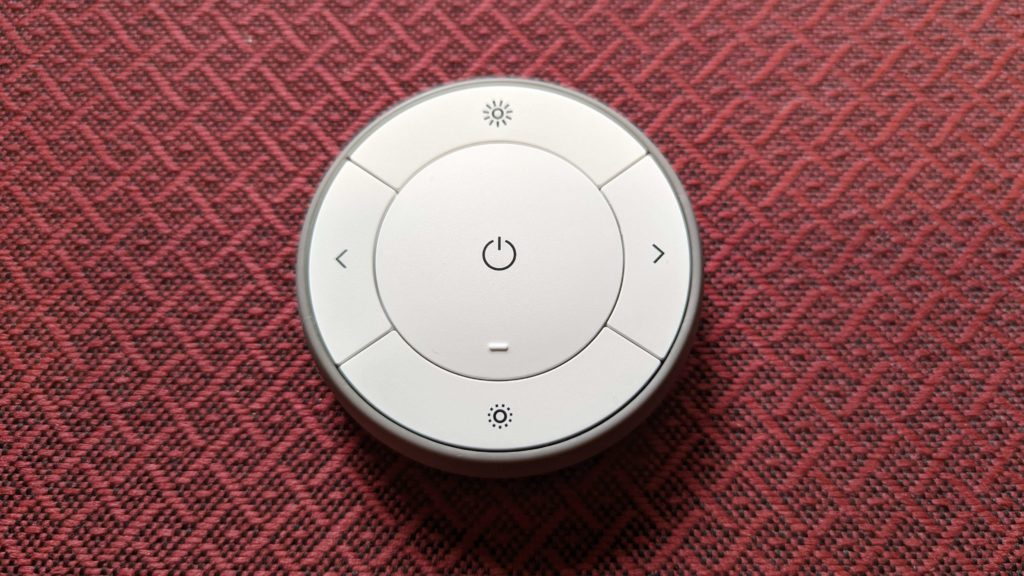
This inexpensive and tiny Zigbee-powered remote control was the perfect replacement for a remote control my son lost. And, thanks to Home Assistant’s Blueprints feature, it was a snap to configure to control the color and brightness of my Shelly-powered LED strip.
Added a fingerprint scanner
Biometrics is something I’ve wanted to add to my smart home for a while, and I finally found an inexpensive and useful way to do it. Using about $50 in materials I built a fingerprint scanner and enabled it to securely open and close my garage door.
Implemented air quality monitoring and added air quality sensors
With lots of wildfires over the past few years, we’ve had some bad air quality. But I wondered how bad the air quality was inside my home. I used ESPHome (like I used for the fingerprint scanner) and some inexpensive materials. I built a couple of air quality sensors and added an integration to Home Assistant to monitor general air quality around me.
Added and smart air purifier
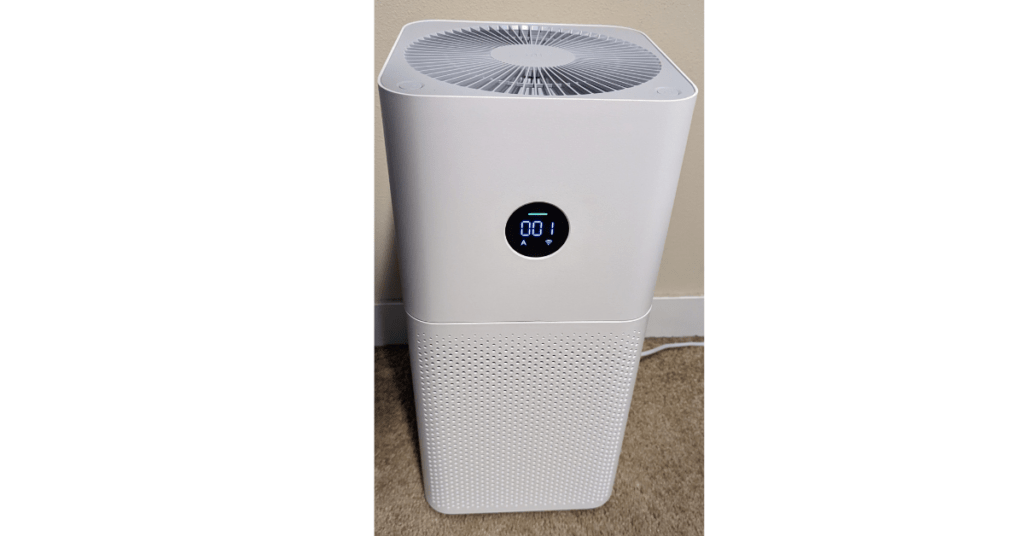
Unfortunately, the air quality outside got so bad that it did seep into my home, as my sensors told me. I bought a Xiaomi Mi 3C smart air purifier that I’ve been happy with. It integrates with Home Assistant and has an air quality sensor.
Upgraded my servers to Ubuntu 22.04 (Jammy Jellyfish)
I stay on the latest Long Term Support (LTS) version of Ubuntu for my servers and desktop, which means I upgrade every two years. This was the year. For the most part, the upgrade went smoothly. Glad I won’t have to do it again until 2024! And, by then I may have a new desktop.
Switched to more lithium-ion UPSes
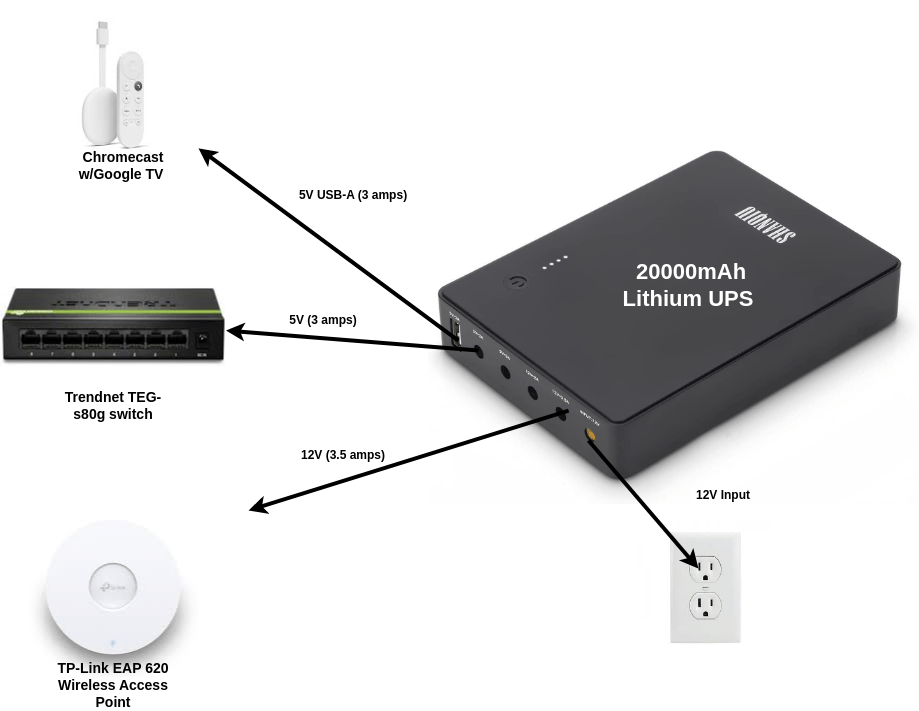
A couple of years ago, I started using a lithium-ion UPS to power a network switch in my structured wiring closet. I needed a small UPS that would last a long time. I didn’t need a ton of wattage to provide backup power to a switch.
This year, I extended that concept and used lithium-ion UPSes to back up some of my access points, streaming devices, and surveillance cameras.
Recycled old electronics
This isn’t so much a big change to my smart home functionality, but I think it is worth knowing. When you are a gadget guy like me, you start to accumulate tech. Over time, you replace tech you don’t need. Rather than letting the old tech pile up, I found some ways to make money selling my old tech.
All the regular updates that a smart home takes…
I kept up with the more mundane tasks of upgrading the firmware for LED controllers, routers, network controllers, access points, and more. Also, keeping my OSes, Docker containers, and Home Assistant up to date. Sometimes it seems like installing (and occasionally troubleshooting) updates is a full-time job in itself.
As you’ll see later in this article, I have some plans to make that easier next year…
Inventorying my smart home
My smart home has grown a lot again this year. Here are some counting stats for my smart home, with how much they’ve changed since last year in parentheses:
- 170 devices on my home network (+13)
- 140 Home Assistant automations (+13)
- 31 Home Assistant integrations (+5)
- 42 Z-wave devices (-5, I replaced some of them with Wi-Fi devices)
- 10 Shelly relays (+1)
- 7 Wi-Fi smart plugs (+1)
- 12 security cameras (same as last year)
- 11 smart bulbs (same as last year)
- 2 flood sensors (same as last year)
- 10 WLED powered LED strips and strings (+1) and 1 Shelly RGBW2 powered LED strip (same as last year)
- A mixture of Rokus and Chromecast with Google TVs with an Android TV and FireTV stick thrown in
- Some miscellaneous smart home devices: Ecobee3 Lite thermostat, Deebot N79S robot vacuum, irrigation controller, Brilliant Smart Home Control light switches, and a Mii Air Purifier.
My smart home plans for 2023
Every year, I plan improvements. Here’s what’s on tap for this year.
Find better ways to manage as many updates as I can
I’ll be looking into automation tools like ansible for this. It has long been on my list of things to do, and 2023 is the year to start learning.
Buy and play with a Matter device or two
Although probably wouldn’t get any great advantage from using Matter with my setup, I like to stay on top of major new developments. And, I believe Matter is a major new development for smart homes.
Get a better robot vacuum
I’ve been happy with my Deebot N79S, but I’d like a smarter robot. One that maps your floor and can do a room at a time. Maybe even one that can mop. I’ll be on the lookout for sales on the right device.
Add some VMs to my Proxmox hosts
One of these VMs will probably be an automation VM (perhaps Ansible and related tools). Another will probably be a Windows VM, as I don’t have a Win 11 VM yet. Sometimes I like to test things that are windows-only.
Buy or build a smart display/smart clock
I’ve been wanting to build a simple smart display that tells the time and can display short messages and notifications. I haven’t because honestly, I seem to be able to find Google Assistant- and Alexa-powered smart displays that can do much of the same things and more at a lower cost than it would take for me to build one. So I’ll decide this year…
Clean up my Home Assistant config files
A couple of years ago I organized them better. But now, I need to refactor some code, clear out some old commented code, etc., so that it is more readable and easier to maintain.
5G backup Internet
This was on my list last year, but I didn’t get to it. I plan to investigate 5G Internet for home service in my area and see if it makes sense as a backup to my fiber connection. My current 4G backup Internet solution has some data limitations.
Final thoughts
I hope you have found the information in this post interesting, informative, and entertaining. I love reading about other people’s smart homes as it inspires ideas for mine. Let me know if this article has done the same for you in the comments or on Twitter.

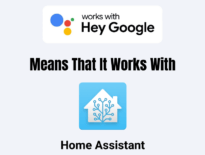

Hey, sounds like you have had one hell of a productive year!
One question from me RE WiFi6, I tried to implimement a wifi6 mesh but none of my IoT 2.4g devices connected in, no matter what I did, how did you manage it with your older devices, really want to upgrade but thus is a blocker for me.
Cheers
Brent
Hi Brent, What devices are you using to make your mesh? In my case, I use access points that have the ability to have mixed-mode Wi-Fi networks that support newer and older protocols at the same time. If that doesn’t work for some or all of your devices, hopefully your Wi-Fi mesh allows you to make separate Wi-Fi networks (SSIDs). You could make one on the older protocols (Wi-Fi 5) and another one that your Wi-Fi 6 devices connect to.
I was using NETGEAR Nighthawk Dual-Band WiFi 6 Mesh System (MK62), they were crap as well, really bad range and connectivity for my phones but none of my other devices would connect, could be I am not technically savvy enough but it only allowed me to have one SSID and the devices were supposed to auto connect choose…
I may need to use what you are so I know I am safe 🙂
I don’t use a mesh system, I use TP-Link APs. I believe they can operate in mesh mode (without a wired backhaul), but I use them as wired APs. I took a quick look at the manual for the MK62 and I would think it could do multiple SSIDs, but what I looked at wasn’t 100% clear. It may only support a guest SSID separate from the main one.